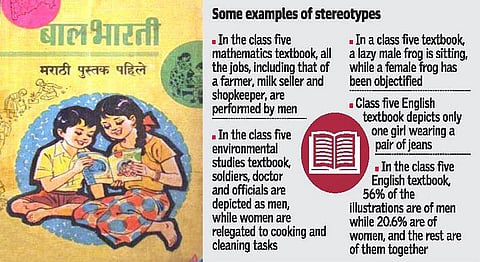
- HOMEGROWN WORLD
- #HGCREATORS
- #HGEXPLORE
- #HGVOICES
- #HGSHOP
- CAREERS
- ABOUT US
- CONTACT US

India may be climbing the rungs on the global literacy ladder, but the question of what passes as “education” in our country is speculative. At a time when young minds are most susceptible to knowledge and change, the facts that are fed to them, true or false, will have a lasting effect on their minds. Education is an effective agent to assist in the understanding of the social, political and cultural changes that take place around us, and more often than not, our education system falls short when it comes to ensuring that the effective mediums and tools are used to aid this process.
From our textbooks to illustrations to historical factuality, a very rudimentary but deeply rooted sense of stereotype is clearly evident. This toxic stereotype branches out to revel in gender bias and gender division, wherein every aspect of an individual’s life seems to be socially constructed, with no room for adjustment and acceptance of newer and better alternates. Over the decades, the Education Board has been condemned by professionals and organisations for its absurd, yet blatant, sexist views and remarks in prescribed textbooks, despite the lofty proclamations by official educators, with regard to their dictatorial jurisdiction over the content of these textbooks, and how extensive care is paid to details within these narratives.
In an attempt to eradicate the tone of gender stereotypes from school curriculums, the Balbharti (Maharashtra State Bureau of Textbook Production and Curriculum Research) has recently revised a number of textbooks for lower classes, to keep up with the changing social formation of the nation. Illustrations have been modified to show men and women working the same job, additioned with lady police officers and men helping with household chores. Insightful measures were taken by the Bureau to ensure that accurate depictions of empowered women are found in abundance, and that gender disparity is kept to a minimum. This rectification has given us a reason to rejoice, because while it may seem like a small step in the educational sphere, it is a huge leap forward, with positively enormous social, cultural and developmental impact.
If one were to look back to the previous decade, ample cases of how gender stereotypes were represented can be found. Narendra Nath Kalia’s pioneering work, “Sexism in Indian Education: The Lies We Tell Our Children”, published in 1980, discussed in detail the unsettling accounts of traditionalized gender roles, and patriarchal customs that were mentioned and followed by Indian school curriculums. Boys being represented as active participants, and girls as passive bystanders was common practice. Almost 4 decades down the line, we continue to witness instances of sexism, with masculinisation of jobs, women being exiled to domestic commitments, the establishment of “perfect” body measurements for men and women, the clear indication of what is considered beautiful, based on a woman’s skin type; the list can go on indefinitely. The horrifying fact remains that, in India’s educational trend to promote rote learning at the price of logical reasoning, this is the kind of blather that is being fed to impressionable children and teenagers, who will grow up with the notion that having a certain gender can deem you inferior or superior.
Representation plays a major role in shaping the lives of individuals. It is how they identify and relate themselves with the world around them. It gives people a chance to look beyond what they think is possible, and reach for the “unattainable”. Over the years, the perception that women have of themselves has evolved, and they no longer confine themselves to the social norms of casual sexist behavior. By challenging stereotypes, even if it’s on a textbook level, we make way for growth and a change in attitude, that can mould the minds of generations to come.
If you liked this article we suggest you read:
